THE BUSHWICK WHEELMEN CLUBHOUSES (1894)
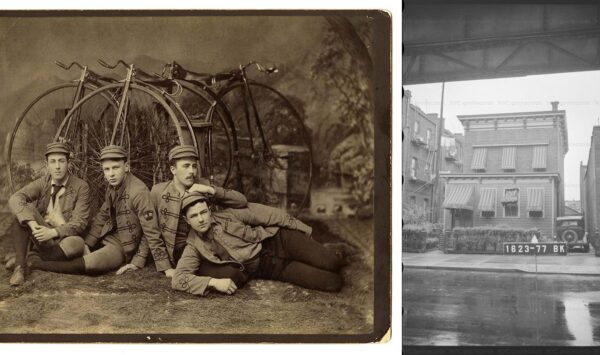
******************************************************************************************************************************** Brownstone Detectives investigates the history of our clients’ homes. The story you are about to read was composed from research conducted in the course of one of those investigations. Do you know the history of YOUR house? ******************************************************************************************************************************** When the cycling rage began in the early 1890s, Bushwick’s “wheel” enthusiasts joined together under the moniker, the Bushwick Wheelmen. It would not be long before, as with other clubs of the era, that the Wheelmen would find a club house of its own. In 1894, the the club purchased its first Brooklyn clubhouse, No. 841 Lexington Avenue, in today’s Bedford-Stuyvesant section. “The Bushwick Wheelmen have fairly settle in their new club house, at 841 Lexington avenue,” noted the Brooklyn Citizen in 1894. “Their membership list numbers about one hundred, and the financial condition of the club is excellent.” “An opening reception was held on Wednesday night and it proved a very enjoyable affair,” reported the Brooklyn Daily Eagle. “The club house was decorated and a large company of women were present. “At 11 P. M. a collation was served.” Throughout the next few years, numerous meetings, parties, and euchres were held in the 2-story wood-frame house. Around 1897, the house was sold to a private family and the club moved its clubhouse to “the corner of Bushwick avenue and Harman street,” No. 897 Bushwick Avenue. “It is situated in one of the choicest residential sections of the city,” said the Times Union. “The building is a three-story and basement structure, […]
THE CHANGING FACE OF MACON STREET (1908)
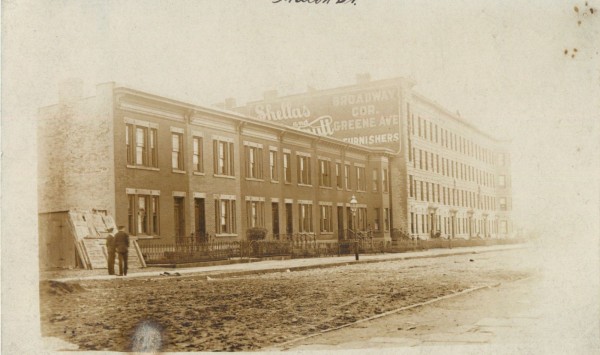
******************************************************************************************************************************** Brownstone Detectives investigates the history of our clients’ homes. The story you are about to read was composed from research conducted in the course of one of those investigations. Do you know the history of YOUR house? ******************************************************************************************************************************** While researching the history a local brownstone, we located an old postcard of a street in Bedford-Stuyvesant. The sepia paper photograph gives an idea of the innate promise of the neighborhood back in 1908 as it was still being built up with new brownstones, limestones, and rowhouses. That picture postcard, featured above, shows a stretch of Macon Street – replete with newly built rowhouses – that starts at the back of the Saratoga Library on Thomas S. Boyland Street (then, it was Hopkinson Avenue), and ends about halfway down the block before reaching a row of barrel-fronted 2-family houses and the one-time parking garage at the corner of Saratoga Avenue (now the Shirley Chisholm Day Care Center). Interestingly, this part of Macon Street still had its dirt (mud on rainy days) street as late as 1908. Residents of the area had been complaining to the City of Brooklyn (by 1908, the borough of Brooklyn) since the 1890s about the slow pace of street paving in the district. Home building had gone on at such a fast clip during this period that the city had struggled to keep up with the builders. The houses that are the focal point of the snapshot were the first put up on the block – what […]
SUNSETTING ON A BED-STUY BOULEVARD (1909)
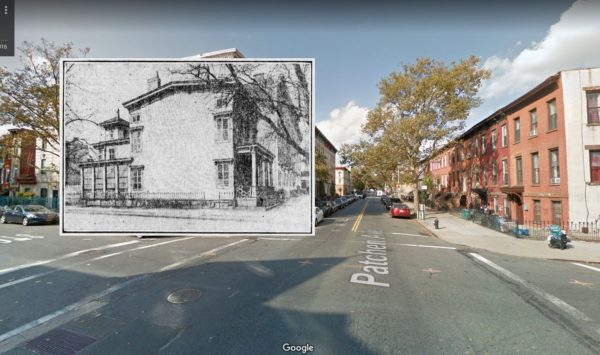
******************************************************************************************************************************** Brownstone Detectives investigates the history of our clients’ homes. The story you are about to read was composed from research conducted in the course of one of those investigations. Do you know the history of YOUR house? ******************************************************************************************************************************** In 1909, a landmark was about to be destroyed. It was quite common, though, at the time for owners to tear down the antiquated wood-frame mansions that dotted Brooklyn’s lamdscape. Since the new brownstone houses had become all the rage in the 1880s, these tinder “firetraps” had become redundant, difficult to sell, and simply unstylish to live in. By the late 19th century, they were being sold, in many cases, for the value of their land as building lots. And with the demise of these historical artifacts, went some truly beautiful examples of mid-19th century architecture, few of which remain with us to this day. THE DE MILLE HOUSE The De Mille house was built around the middle of the 19th century for the family of that name, “and it has been a landmark in that region since the days when it was surrounded by open fields.” Yes, even Bedford-Stuyvesant – today chockablock with brownstone and masonry homes – was once – even before the advent of wood-frame homes – forested land alongside open virgin fields. As a matter of fact, the corner of Quincy and Patchen, in the 1850s, was little more than hills, dales, dirt lanes, and the vague promise of a future suburban city. “Broadway, which is nearby, […]
FIRE, FUN & FIASCOES ON THE 4th (1887)
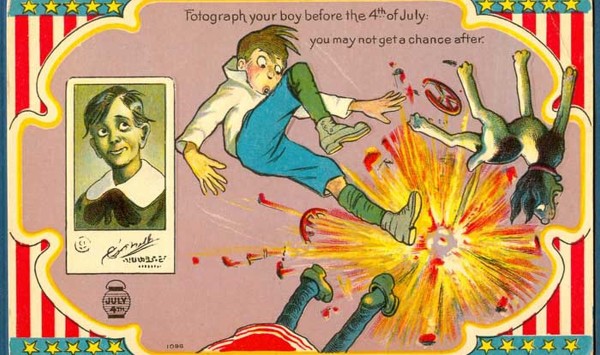
******************************************************************************************************************************** Brownstone Detectives investigates the history of our clients’ homes. The story you are about to read was composed from research conducted in the course of one of those investigations. Do you know the history of YOUR house? ******************************************************************************************************************************** A lot of accidents happen on the 4th of July. While it has been a day of celebration for Americans since its inception, certain citizens have tended to go a bit too far with their fireworks and other dangerous weapons. Back in 1887, a few days after Independence Day, a listing of the damages occurring and casualties effected on that date appeared in the Brooklyn Daily Eagle – once the authorities had had the time to assess the collective destruction. “Pistols and pyrotechnics of every kind were used with absolute impunity by even mere children,” the paper noted, “and the wonder is that more accidents did no occur.” The following list reflects a number of police blotters and lays out the accidents occurring primarily in the Eastern District (Williamsburg and Bushwick areas, and parts of Bed-Stuy). It is partial, but it will 1) boggle your mind, and 2) make you laugh. FIRE CRACKERS AS ASSAULT WEAPONS 8:30 – A boy whose identity could not be discovered threw a firecracker at the peanut stand outside the frame building at 21 Grand street and set it on fire. The building, which was owned and occupied by Sauer Brothers as a saloon, was damaged to the amount of $500 before the flames were extinguished. […]
MISCHIEVOUS BOYS, IRVING SQUARE (1931)
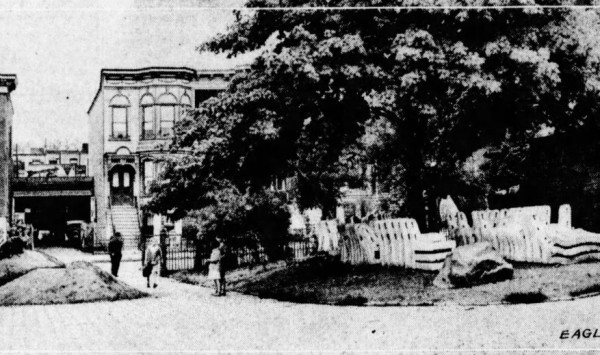
******************************************************************************************************************************** Brownstone Detectives investigates the history of our clients’ homes. The story you are about to read was composed from research conducted in the course of one of those investigations. Do you know the history of YOUR house? ******************************************************************************************************************************** There isn’t much little boy mischief that a Bushwick alderman, a beat cop, and a parks department official can’t handle. And all three were necessary to combat the troublesome striplings that were desecrating Irving Square Park during a renovation in 1931. “There’s not a shrub or a plant missing.” So explained Thomas J. Larney, park keeper for Irving Square Park in Bushwick, in his lilted Irish brogue. “The gardener counts up every week and there’s nothing missing. And there are plenty of seats for people to sit down on.” Larney was responding to public criticisms of a project in the park that was supposed to have ended long ago. Construction equipment, concrete park bench forms, bunches of plants and shrubbery, and piles of dirt, though, still obstructed residents’ enjoyment of the public space. He apparently saw the little mischief-makers, though, as no concern to the project, not even mentioning their after-dark activities. The bigger picture, of course, was just a bit more complicated. A series of unavoidable delays was keeping the contractor from finishing his work. These delays were causing conditions in the park which gave the local residents grief. And the continuation of these conditions presented targets of opportunity for the local miniature scalawags, who would “knock over some of […]
SATAN’S CANDY SHOP (1911)
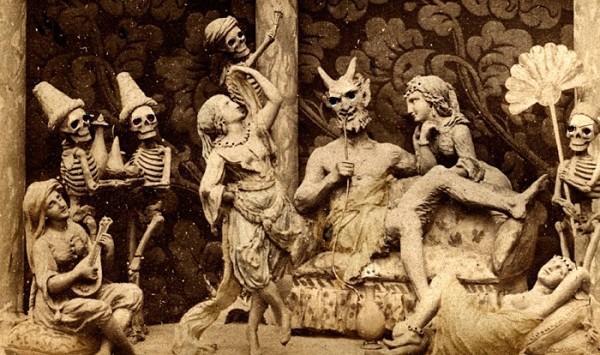
******************************************************************************************************************************** Brownstone Detectives investigates the history of our clients’ homes. The story you are about to read was composed from research conducted in the course of one of those investigations. Do you know the history of YOUR house? ******************************************************************************************************************************** If a man named Hell offered you some candy – would you take it? That was Otto Herman Hell’s problem. And, yes, in fact he was about to open a confectionery in Brooklyn on Broadway. THE DEVIL’S CONFECTIONER It must have been difficult growing up with a name like Hell. There were probably countless jokes and plays on the name. Otto must have been quite tired of it all by the time he reached the age of maturity, at which point he began thinking seriously about changing it. Having emigrated from Germany in 1891, he was 25 when the immigration officials must have looked up at him in surprise as he stood before them hoping to gain entry into the country. “Hell? Hell?” the official must have half-asked, half-shouted, incredulously. “O’Connor, come quick, or you’ll have Hell to pay!” Lots of uproarious laughter here, then a loud stamp, and then Hell was on to the next set of jokes somewhere in his new country. He probably found it curious in the early days, perhaps a bit enjoyable if he had had a playful streak. But, by George, it was 1911 now, and Otto was 36 with a wife and two children. He was more than ready to get serious with his […]
WHEN BUSHWICK MET OCEAN HILL (1923)
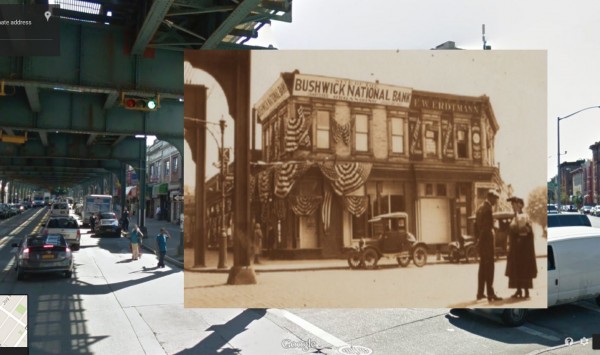
******************************************************************************************************************************** Brownstone Detectives investigates the history of our clients’ homes. The story you are about to read was composed from research conducted in the course of one of those investigations. Do you know the history of YOUR house? ******************************************************************************************************************************** “Ocean Hill” was still settling softly into the Brooklyn lexicon of place names as a working class suburb in 1923. Bushwick, on the other hand, was already very well-known in the borough for its German breweries and beer gardens. But where the two met – and they met, all right – there were SPARKS! (…or maybe a bank or real estate office….) This snapshot was taken at the intersection of Broadway and Hopkinson Avenue (later to be renamed Thomas S. Boyland Street). The building there on the corner in 1923 held the Bushwick National Bank and Frederick W. Erdtmann’s real estate offices. The Bushwick National Bank came into existence the same year that this photograph was taken – probably the reason for the photograph and the patriotic bunting all around the building; the bank ended up merging with the Globe Exchange Bank in 1929, and so had a short life of about six years. Frederick W. Erdtmann, a realtor who lived at 868 Macon Street and then above his real estate offices in this building, had filed for bankruptcy in 1913 before this photo was taken. He was back in the real estate business by 1919 and did well for himself in the 1920s. Who the old woman and the young […]
GUERRILLA MARKETING IN A DRESS (1903)
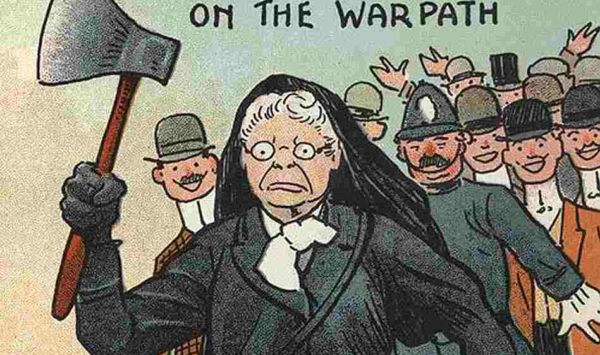
******************************************************************************************************************************** Brownstone Detectives investigates the history of our clients’ homes. The story you are about to read was composed from research conducted in the course of one of those investigations. Do you know the history of YOUR house? ******************************************************************************************************************************** When Brooklyn saloon owners saw Carrie Nation entering their Broadway establishments carrying her ax, their first thought was to protect their liquor. But when that grand and radical old figure of the Victorian temperance movement approached their bars, they were stunned at her request. “Gimme a drink – or else!” The original goal of Nation’s ax-swinging was to promote the temperance movement through the visual image of the destruction of its foe – liquor. It brought new prominence to a movement whose most visual image to date had been old women lambasting the drinking ways of men. When she started swinging that ax, though, she got attention, and so, in extension, did the temperance movement. CARRIE NATION – COMES TO BROOKLYN? But Nation, whose anti-saloon message was promoted primarily in Kansas, was a shocking sight in the Eastern District of Broadway. She had recently visited New York City, though, and so no one was willing to challenge that ax in the bars up and down the avenue – even so close to the liquor center of Brooklyn – Bushwick Avenue. “Dressed in a plush sacque, a neat fitting skirt, an old fashioned bonnet and carrying in one hand a dilapidated carpet bag and in the other a wooden ax, a person, […]
THE FLIGHT OF MOSES MAY’S MAD COW (1865)
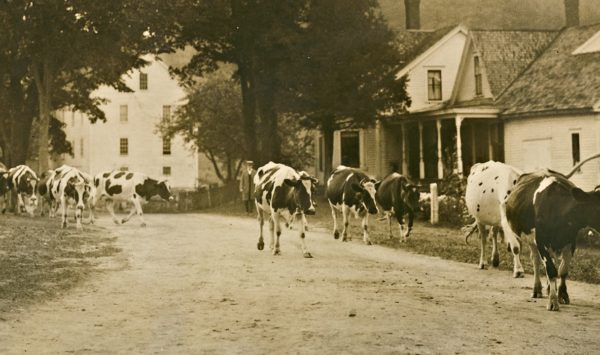
******************************************************************************************************************************** Brownstone Detectives investigates the history of our clients’ homes. The story you are about to read was composed from research conducted in the course of one of those investigations. Do you know the history of YOUR house? ******************************************************************************************************************************** Enjoy this old story about some Brooklyn cows getting loose outside of their normal environs – which, back in old Brooklyn, were quite often our city streets. While doing house research, we found a colorful little story in the Brooklyn Daily Eagle of 1865. It involves two Germans and an Irishman, as well as a supporting cast of a number of primarily immigrant Brooklynites. The story is led by a main character – a pretty “mad cow” – the kind with horns – that went rushing down Bushwick Avenue, having to be taken down by a “citizen,” whereupon it was delivered to a local slaughterhouse for gutting and the production of many sides of meat. Although the article does not expressly state such – stories from this period were famously short on important details – it appears that the original owner lost his cow to a number of very hungry Bushwick pre-hipster citizens. THE FLIGHT OF MAD BESSIE DOWN A VERY BUSY BUSHWICK To set the scene, it all started at about 4 p.m. on Bushwick Avenue in the 16th Ward. Mr. Moses May, a German immigrant of 136 Remsen Street, was driving a drove of cattle along the avenue, after a long day of their bovine grazing in a field, […]
RUTH & SAM & THE BUSHWICK FIRES (1977)
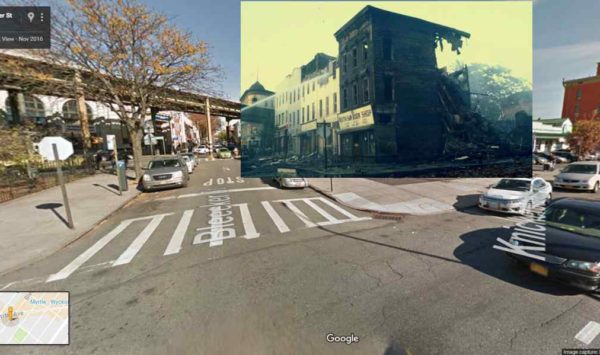
******************************************************************************************************************************** Brownstone Detectives investigates the history of our clients’ homes. The story you are about to read was composed from research conducted in the course of one of those investigations. Do you know the history of YOUR house? ******************************************************************************************************************************** In 1977, a great conflagration burned out the very heart of Bushwick. It was, at the time, one of the largest-scale fires that the Fire Department had ever fought. A 10-alarm fire, it would become “one of the largest structural fires in the city’s history,” according to the New York Times. It started suspiciously at the corner of Knickerbocker Avenue and Bleecker Street in the old Schwaben Hall, an historic German meeting hall most lately used as a knitting factory. According to the Times, the fire would rage down seven blocks of houses, destroying 23 buildings, and forcing the evacuation of more than 250 people. The destructive fire came directly on the heels of the infamous Blackout of 1977, and although the fire would smolder for days after being put out, it took about three to five hours, initially, for 55 units of firefighters from Manhattan, Queens, and Brooklyn, to get it under control. And even with this number of firefighters on the scene, it was apparent that they were working without the tools they needed to fight a fire of this intensity. Since the fire hydrants had been used by city residents throughout the summer to keep cool, they were low on water. Also, firefighters were working with an historic […]